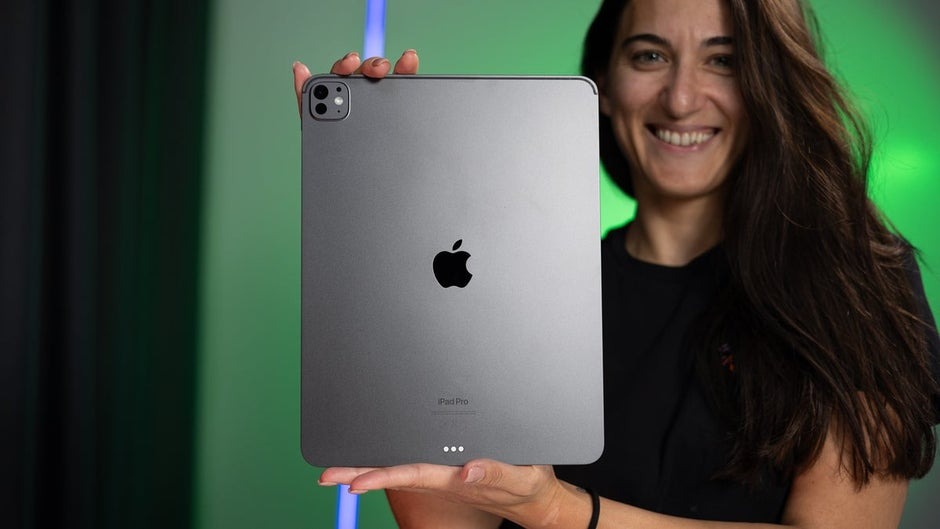A significant shift is taking place within Apple’s global supply chain, highlighting how the tech giant continues to adapt its production strategies in response to market demands and evolving priorities. One of Apple’s primary suppliers has redirected its manufacturing focus, moving resources from producing a critical component for the iPad Pro to prioritizing the iPhone. This decision sheds light on Apple’s ongoing efforts to streamline operations and ensure that its flagship product remains the centerpiece of its ecosystem.
The reallocation of production capabilities signals a strategic response to the sustained demand for the iPhone, which remains Apple’s most profitable product line. By shifting resources from the iPad Pro, the company underscores its understanding of market dynamics and consumer preferences. While the iPad Pro has carved out a niche among creative professionals and power users, it cannot rival the sheer volume of iPhone sales worldwide. With millions of units shipped annually, the iPhone’s influence extends far beyond its role as a smartphone; it serves as the hub of Apple’s hardware, software, and services ecosystem.

Reports indicate that the key component being shifted is the advanced OLED display panel, a critical feature that enhances visual clarity and energy efficiency. OLED technology has become a cornerstone of Apple’s premium devices, offering richer colors and deeper contrast ratios compared to traditional LCD screens. By redirecting the production of these panels toward the iPhone, Apple ensures that its flagship device continues to lead the market in terms of display quality. This decision also reflects broader industry trends, as demand for OLED displays grows across multiple product categories.
While the decision prioritizes the iPhone, it inevitably impacts the iPad Pro’s production schedule. Consumers anticipating new models of the high-end tablet may face delays, as suppliers adjust their manufacturing pipelines. However, Apple has historically demonstrated a knack for balancing its product lineup to minimize disruption. The company’s ability to manage such shifts without alienating its customer base speaks to its operational expertise and the loyalty of its users.
The rationale behind this production pivot becomes clearer when examining global sales trends. The iPhone continues to dominate in key markets, maintaining its position as a status symbol and a technological benchmark. Despite the iPad Pro’s appeal to certain segments, it lacks the universal appeal of the iPhone. Moreover, the iPhone’s integration with Apple’s services, including iCloud, Apple Music, and the App Store, ensures it remains indispensable to consumers. This interconnected ecosystem drives revenue not only through hardware sales but also through recurring subscriptions and app purchases, making the iPhone a cornerstone of Apple’s financial strategy.
The following table illustrates how the iPhone’s sales figures compare to those of the iPad Pro in recent years, highlighting the stark difference in their market footprints:
| Year | iPhone Sales (Million Units) | iPad Pro Sales (Million Units) |
|---|---|---|
| 2021 | 240 | 17 |
| 2022 | 228 | 14 |
| 2023 | 237 | 16 |
These numbers underscore why Apple prioritizes its smartphone lineup. With annual sales figures exceeding 200 million units, the iPhone generates a significant portion of Apple’s revenue. In contrast, the iPad Pro, while successful in its niche, accounts for a smaller fraction of the company’s overall sales.
This strategic shift also reflects broader changes in consumer behavior. The rise of hybrid work and remote learning during the pandemic boosted demand for tablets, including the iPad Pro. However, as global conditions stabilize, that demand has leveled off. Meanwhile, smartphones remain an essential tool for daily communication, work, and entertainment, ensuring steady demand regardless of external factors.
Apple’s decision to prioritize the iPhone over the iPad Pro also highlights the importance of supply chain flexibility. Managing a global network of suppliers and manufacturers requires precise coordination, especially when unexpected challenges arise. Recent disruptions, including global semiconductor shortages and geopolitical tensions, have tested the resilience of tech companies. Apple’s ability to adapt quickly to these challenges demonstrates the strength of its supply chain management and its commitment to delivering products on time.
Another factor influencing this decision is the competitive landscape. Apple faces increasing pressure from rivals in the smartphone market, many of whom also use OLED technology in their devices. By ensuring a steady supply of OLED panels for the iPhone, Apple strengthens its position against competitors, particularly in the premium segment. The iPhone’s ability to differentiate itself through superior design, performance, and integration with Apple’s ecosystem remains a key advantage.
Despite the focus on the iPhone, Apple continues to invest in the iPad Pro’s long-term potential. The tablet remains a critical component of Apple’s product lineup, particularly for professionals and creatives who value its powerful hardware and versatile software. Features like the M-series chips, advanced camera systems, and compatibility with accessories such as the Apple Pencil and Magic Keyboard ensure the iPad Pro remains a leader in its category. However, these features also rely on the same supply chain resources used for the iPhone, necessitating strategic decisions about resource allocation.
Looking ahead, this production shift could signal broader changes in Apple’s product strategy. As the company explores new technologies, including augmented reality (AR) and artificial intelligence (AI), its devices will need to adapt to changing consumer expectations. The integration of AR features, for example, could benefit both the iPhone and the iPad Pro, offering new use cases and enhancing their appeal. However, achieving these innovations requires careful planning and prioritization within Apple’s supply chain.
The ripple effects of this decision may also influence Apple’s relationships with suppliers. By redirecting production resources, Apple sends a clear message about its priorities, encouraging suppliers to align their operations accordingly. This dynamic underscores the power Apple wields within the tech industry, as its decisions often set trends that other companies follow.
Ultimately, Apple’s ability to navigate these challenges while maintaining customer satisfaction will determine the success of this strategy. By prioritizing the iPhone without neglecting the iPad Pro’s potential, Apple strikes a delicate balance that ensures both products continue to thrive. This approach not only reinforces Apple’s leadership in the tech industry but also positions the company to adapt to future challenges and opportunities.










Add Comment